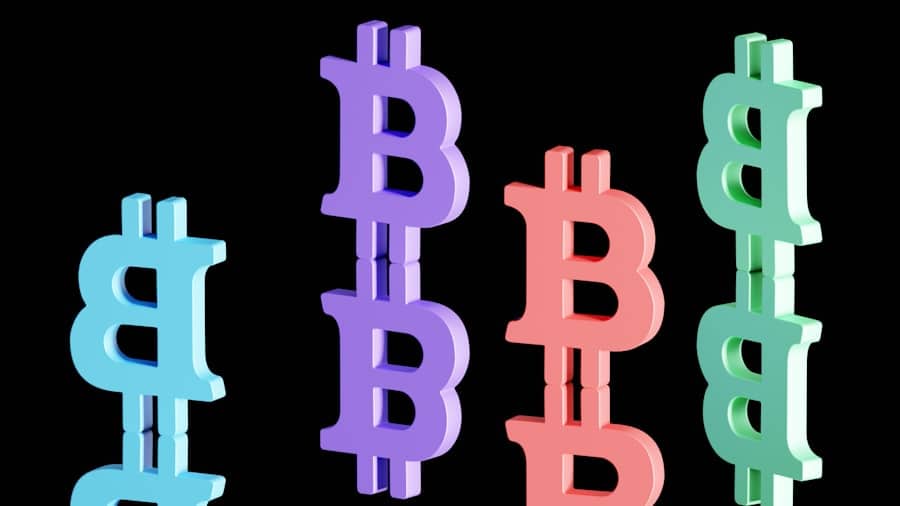Blockchain settlement systems represent a transformative approach to the way transactions are recorded, verified, and settled across various industries. At their core, these systems leverage distributed ledger technology (DLT) to create a secure, transparent, and immutable record of transactions. Unlike traditional settlement systems, which often rely on centralized authorities and intermediaries, blockchain settlement systems operate on a decentralized network of nodes.
This decentralization not only enhances security but also reduces the time and costs associated with transaction processing. The concept of blockchain was first introduced with Bitcoin in 2008, but its potential extends far beyond cryptocurrencies. Today, various sectors, including finance, supply chain management, and real estate, are exploring the capabilities of blockchain for settlement purposes.
By enabling peer-to-peer transactions without the need for intermediaries, blockchain settlement systems can streamline processes that have historically been cumbersome and slow. As organizations increasingly recognize the benefits of this technology, the landscape of transaction settlement is poised for significant change.
Key Takeaways
- Blockchain settlement systems offer secure and transparent transactions through decentralized ledgers
- Advantages include reduced costs, faster settlement times, and increased efficiency
- Increased adoption is driven by the need for trust, security, and cost-effectiveness in financial transactions
- Traditional settlement systems are facing disruption and need to adapt to the changing landscape
- Regulatory considerations include the need for standardization, compliance, and consumer protection
- Challenges include scalability, interoperability, and potential security vulnerabilities
- The future outlook is promising, with potential for widespread adoption and integration into various industries
- In conclusion, blockchain settlement systems have the potential to revolutionize the way financial transactions are conducted, offering numerous benefits and opportunities for innovation.
Advantages of Blockchain Settlement Systems
One of the most compelling advantages of blockchain settlement systems is their ability to enhance transparency. Each transaction recorded on a blockchain is visible to all participants in the network, creating a level of openness that is often lacking in traditional systems. This transparency not only fosters trust among parties involved in a transaction but also facilitates auditing and compliance processes.
For instance, in supply chain management, stakeholders can trace the provenance of goods in real-time, ensuring that products meet regulatory standards and ethical sourcing requirements. Another significant benefit is the reduction in transaction costs and processing times. Traditional settlement systems often involve multiple intermediaries, each taking a cut of the transaction fee and adding layers of complexity to the process.
In contrast, blockchain settlement systems can eliminate many of these intermediaries by allowing direct transactions between parties. For example, in cross-border payments, blockchain technology can significantly reduce the time it takes to settle transactions from days to mere minutes while also lowering fees associated with currency conversion and intermediary banks.
Increased Adoption of Blockchain Settlement Systems

The adoption of blockchain settlement systems has been steadily increasing across various sectors as organizations seek to capitalize on the technology’s advantages. Financial institutions have been at the forefront of this trend, with many banks and payment providers exploring blockchain for real-time gross settlement systems. For instance, Ripple has developed a blockchain-based payment protocol that enables instant cross-border transactions, attracting partnerships with major banks worldwide.
This growing interest reflects a broader recognition that blockchain can enhance operational efficiency and customer satisfaction. Moreover, industries beyond finance are also embracing blockchain settlement systems. In real estate, companies are experimenting with tokenization, where property assets are represented as digital tokens on a blockchain.
This innovation allows for fractional ownership and simplifies the buying and selling process by reducing paperwork and streamlining title transfers. Similarly, in the supply chain sector, firms like IBM and Maersk have launched blockchain initiatives to improve traceability and accountability in logistics. As these use cases demonstrate tangible benefits, more organizations are likely to adopt blockchain technologies for their settlement processes.
Impact on Traditional Settlement Systems
The rise of blockchain settlement systems poses significant challenges to traditional settlement frameworks. Established systems often rely on centralized entities such as clearinghouses and banks to facilitate transactions, which can lead to inefficiencies and increased costs. As blockchain technology gains traction, these traditional players may find themselves under pressure to adapt or risk obsolescence.
For example, the swift processing capabilities of blockchain could render some existing payment networks less competitive if they fail to innovate. Furthermore, the introduction of blockchain settlement systems could lead to a re-evaluation of regulatory frameworks governing financial transactions. As decentralized networks operate outside traditional banking structures, regulators may need to adapt their approaches to ensure consumer protection and financial stability.
This shift could result in a more fragmented landscape where traditional institutions must compete with agile blockchain-based solutions that offer faster and cheaper alternatives.
Regulatory Considerations for Blockchain Settlement Systems
As blockchain settlement systems continue to evolve, regulatory considerations become increasingly important. Governments and regulatory bodies around the world are grappling with how to approach this new technology while balancing innovation with consumer protection. One key challenge is defining the legal status of digital assets and transactions conducted on blockchain networks.
For instance, questions arise regarding whether cryptocurrencies should be classified as securities or commodities, which has implications for how they are regulated. Additionally, issues related to anti-money laundering (AML) and know your customer (KYC) regulations must be addressed within the context of blockchain settlement systems. The pseudonymous nature of many blockchain transactions can complicate efforts to trace illicit activities.
As a result, regulators are exploring ways to implement compliance measures without stifling innovation. Some jurisdictions have begun to establish frameworks that encourage responsible use of blockchain technology while ensuring that appropriate safeguards are in place.
Challenges and Limitations of Blockchain Settlement Systems

Despite their numerous advantages, blockchain settlement systems face several challenges and limitations that must be addressed for widespread adoption. One significant hurdle is scalability; as more users join a blockchain network, the system can become congested, leading to slower transaction times and higher fees. For example, during periods of high demand on the Ethereum network, users have experienced delays and increased gas fees for processing transactions.
Solutions such as layer-2 scaling solutions or alternative consensus mechanisms are being explored to mitigate these issues. Another challenge lies in interoperability between different blockchain networks.
This lack of interoperability can hinder the seamless transfer of assets across platforms and limit the overall utility of blockchain settlement systems. Initiatives like Polkadot and Cosmos aim to address this issue by creating frameworks that facilitate communication between disparate blockchains, but achieving widespread interoperability remains a complex task.
Future Outlook for Blockchain Settlement Systems
The future outlook for blockchain settlement systems appears promising as technological advancements continue to unfold. As more organizations recognize the potential benefits of adopting this technology, we can expect an increase in investment and innovation within the space. The development of more efficient consensus algorithms and scaling solutions will likely enhance the performance of blockchain networks, making them more viable for high-volume transaction environments.
Moreover, as regulatory frameworks evolve to accommodate blockchain technology, we may see greater acceptance and integration within traditional financial systems. Central bank digital currencies (CBDCs) are already being explored by various countries as a means to leverage blockchain’s advantages while maintaining regulatory oversight. The successful implementation of CBDCs could pave the way for broader adoption of blockchain settlement systems across different sectors.
The Potential of Blockchain Settlement Systems
Blockchain settlement systems hold immense potential to revolutionize how transactions are conducted across various industries. By enhancing transparency, reducing costs, and streamlining processes, these systems offer a compelling alternative to traditional settlement frameworks. As adoption continues to grow and regulatory considerations evolve, we may witness a significant shift in how financial transactions are executed globally.
While challenges remain—such as scalability issues and interoperability—ongoing innovations within the blockchain space are likely to address these limitations over time. The future landscape will likely see a blend of traditional financial institutions adapting to incorporate blockchain technologies alongside new players emerging from the decentralized finance (DeFi) sector. Ultimately, the potential for blockchain settlement systems extends far beyond mere efficiency; it represents a fundamental shift towards a more inclusive and transparent financial ecosystem.
The growing interest in blockchain settlement systems is part of a broader trend towards leveraging technology to enhance efficiency and connectivity across various sectors. A related article that explores this theme is “How Smartwatches Are Enhancing Connectivity,” which discusses how wearable technology is revolutionizing the way we stay connected in our daily lives. This article provides insights into how technological advancements are not only transforming financial systems but also personal devices, making them more integrated and efficient.

